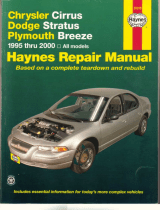Page is loading ...

KEYSTONE MODEL FC TWIN CHECK VALVES
OPERATING AND MAINTENANCE INSTRUCTIONS
DISASSEMBLY
The following steps must be taken in order
to disassemble a FloCheck valve, assuming
that the valve is already removed from the
pipeline and that, if previously used, it has been
adequately decontaminated.
1. Unscrew the pin retainers from the body.
2. Place the valve on a flat surface with the
downstream side (spring) uppermost.
3. Withdraw the upper (stop) pin.
4. Apply manual pressure to the spring(s) to
hold them in position.
5. Withdraw the hinge pin on which the spring
is mounted.
6. Gradually release the spring tension by
reducing the manual pressure.
7. Remove the plates and bearings to reveal
the valve seat.
ASSEMBLY
The following steps must be taken in order to
assemble a FloCheck valve.
1. Thoroughly wash body and plates with a
suitable solvent.
2. Place the valve on a flat surface with the
downstream side (spring) uppermost.
3. Lay the plates inside the body, with the
hinge lugs together and uppermost, the
sealing surface being against the valve seat.
4. Insert the body bearings and plate bearings
between the body and plate lugs, and
between the plate lugs respectively, as
shown in the diagram.
5. Check the plates and lug bearings for
endplay. If the endplay is excessive, or
where design specifies, insert additional lug
bearings as required.
6. If the valve is equipped with only one spring
(smaller sized models), tension the spring
manually and then position between the
plate lugs, with the convex side of the leg
against the plate.
Where two springs are fitted (larger sized
models), one is tensioned by clockwise
rotation, whilst the other requires anti-
clockwise tensioning to produce a balanced
spring effect.
7. Apply manual pressure to the spring(s) to
hold them in position and under tension.
Insert the hinge pin into the body, passing
it through the lug bearings, plate lugs and
spring(s). It is now possible to release the
manual pressure on the spring(s).
WARNING!
Your FloCheck valve must be installed with the
arrows in direction of flow.
VALVE PARTS EXPLOSION
Pin
retainers
Pin
retainers
Body
Spring
Plate
Hinge pin
Lug
bearing
Body
bearing
Disassembly and assembly instructions
See illustration for identification of parts.
Stop pin
VCIOM-01735-EN 14/11
www.valves.emerson.com © 2017 Emerson. All rights reserved.

2
8. Put one round of PTFE tape on the threads
of the hinge pin retainers. Screw the hinge
pin retainers into the body and tighten.
9.
Applying manual pressure to the spring(s),
check that the hinge pin is able to slide in
both directions. This ensures that the hinge
pin retainer(s) do not bottom on the pin,
which may prevent the retainer from sealing.
10. Insert the stop pin into the body and (if
present) through the top coil of the spring
(see illustration).
11. Put one round of PTFE tape on the threads
of the stop pin retainers. Screw the stop pin
retainers into the body and tighten.
12. Check smooth operation by moving the
plates several times against the spring(s).
13. Apply the appropriate identification plates,
as required.
14. Pressure test the valve in accordance with
standard API 598.
KEYSTONE MODEL FC TWIN CHECK VALVES
OPERATING AND MAINTENANCE INSTRUCTIONS
© 2017 Emerson. All rights reserved.
/

